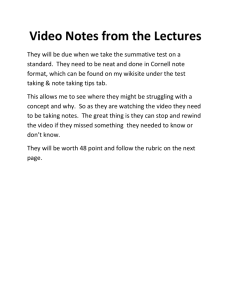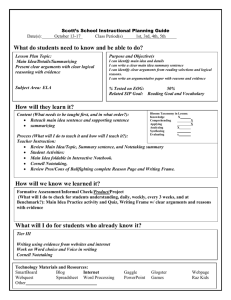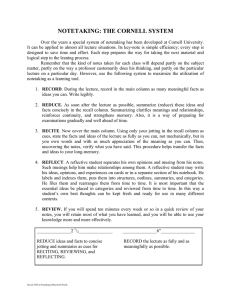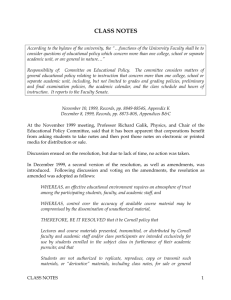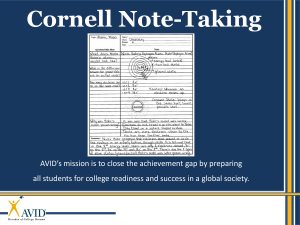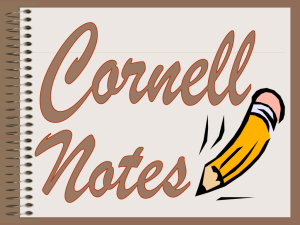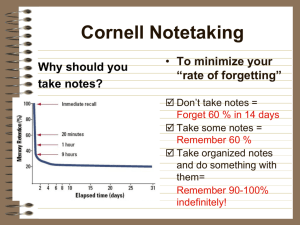Cornell Notetaking Form
advertisement
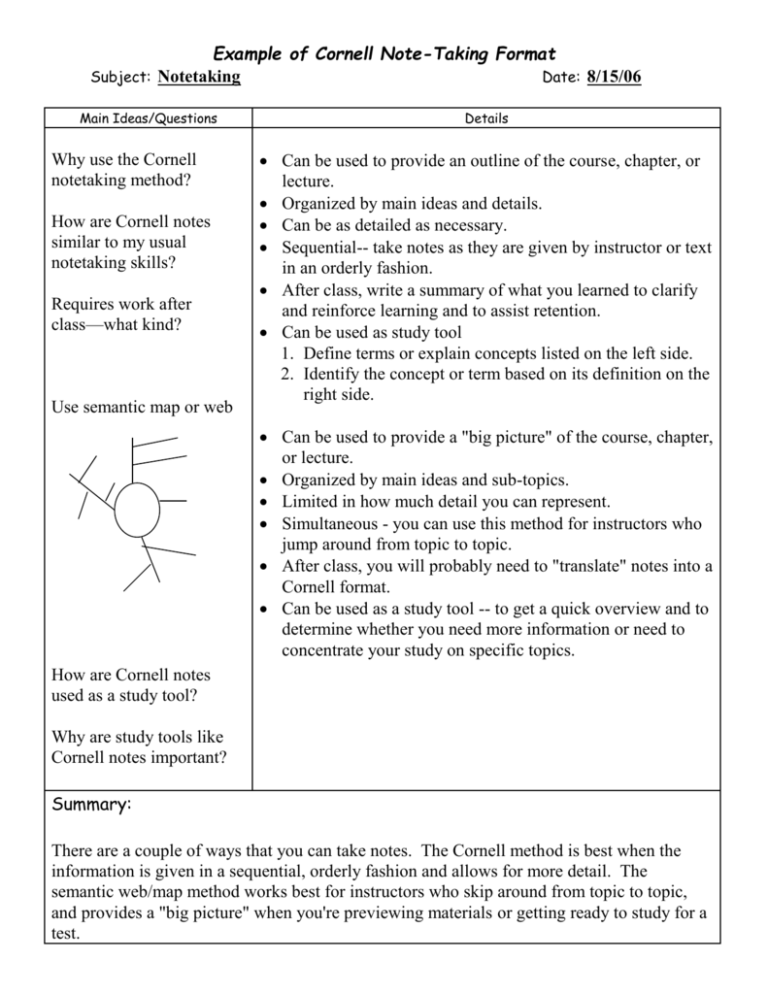
Example of Cornell Note-Taking Format Subject: Notetaking Date: 8/15/06 Main Ideas/Questions Why use the Cornell notetaking method? How are Cornell notes similar to my usual notetaking skills? Requires work after class—what kind? Use semantic map or web Details Can be used to provide an outline of the course, chapter, or lecture. Organized by main ideas and details. Can be as detailed as necessary. Sequential-- take notes as they are given by instructor or text in an orderly fashion. After class, write a summary of what you learned to clarify and reinforce learning and to assist retention. Can be used as study tool 1. Define terms or explain concepts listed on the left side. 2. Identify the concept or term based on its definition on the right side. Can be used to provide a "big picture" of the course, chapter, or lecture. Organized by main ideas and sub-topics. Limited in how much detail you can represent. Simultaneous - you can use this method for instructors who jump around from topic to topic. After class, you will probably need to "translate" notes into a Cornell format. Can be used as a study tool -- to get a quick overview and to determine whether you need more information or need to concentrate your study on specific topics. How are Cornell notes used as a study tool? Why are study tools like Cornell notes important? How could Cornell notes Summary: be beneficial in other areas of your life? There are a couple of ways that you can take notes. The Cornell method is best when the information is given in a sequential, orderly fashion and allows for more detail. The semantic web/map method works best for instructors who skip around from topic to topic, and provides a "big picture" when you're previewing materials or getting ready to study for a test. --modified from www.bucks.edu (Cornell Notes) Directions for using Cornell Notetaking System: During the lecture or reading 1. Use standard 3-hole paper. 2. Use one side of paper only. 3. Use a blue or black ball point pen. 4. Draw a line 1/3 from the left side of the paper. 5. Write ideas and facts on the RIGHT side of the line. 6. Skip lines between major ideas. 7. Record notes simply. 8. Write key phrases, not entire sentences. 9. Don't make an elaborate outline. 10. Write down all key terms, definitions and examples. 11. Use an abbreviation system. 12. Write neatly. 13. Leave blank space when you miss ideas and add information after asking a teacher or classmate for clarification. After the lecture or reading 1. Read through your notes as soon as possible after the lecture or reading. 2. Rewrite illegible or abbreviated words that you may forget; check spelling. 3. Improve the organization of the notes by highlighting, numbering, and bulleting items. 4. Write key words or questions in the MAIN IDEAS/QUESTIONS column that prompt the information in the notetaking column. When reviewing notes 1. Fold over the right side of your notes so only the recall column is visible. 2. Using the questions or key words in the recall column, recite aloud the facts and ideas of the lecture or reading in your own words. 3. Check your answers using the notetaking column. 4. Check off or notate questions/ideas you should continue to review more seriously. --modified from (Kinsella, San Francisco State University, 10/00) pg. 85

